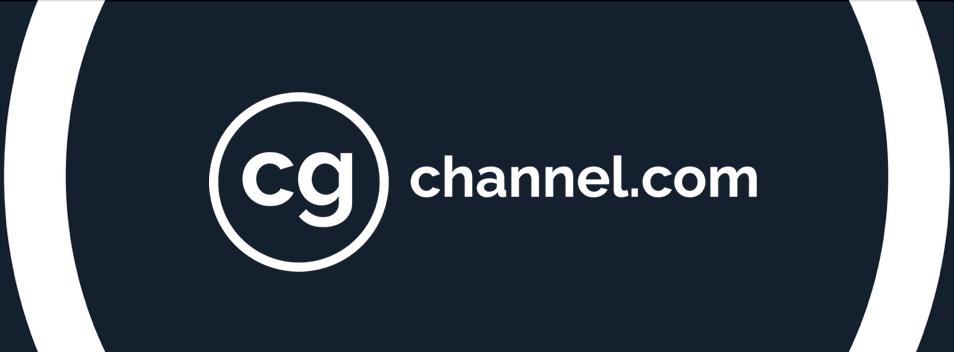Trimble releases SketchUp 2026.0
Trimble has released SketchUp 2026.0 (SketchUp 26.0), the latest version of its architectural modeling software, also often used by concept artists to rough out hard-surface assets.
It’s primarily a quality-of-life update, although there is a new project collaboration feature, and some new control settings for PBR materials.
Users with Studio subscriptions also get new tools for working with point clouds.
New collaboration features and updates to PBR materials
SketchUp 2026.0 marks a departure from Trimble’s normal release schedule, arriving just seven months after SketchUp 2025.0.
The main change is a new collaboration system, with users now able to invite clients or colleagues to view a model on Trimble Connect, Trimble’s cloud-based collaboration platform.
Invited users can navigate the model, take measurements, and leave comments.
There are also updates to the PBR materials introduced in SketchUp 2025.0, with the option to invert the roughness map, and Distance Multiplier and color controls for ambient occlusion.
It is also now possible to display previews of materials on 3D cubes as well as 2D thumbnails, although only on Windows, not macOS.
Workflow and pipeline integration improvements
Otherwise, SketchUp 2026.0 is mainly a quality-of-life update, with workflow improvements to Live Components, and performance improvements when working with large scenes.
For pipeline integration, IFC export consolidates IFC 2×3 and IFC 4 into a single file type; and DWG import and export now preserves hatching and section planes.
Updates to LayOut
Users with Pro and Studio subscriptions also get an update to LayOut, the accompanying app for generating 2D documentation from 3D models.
The UI has been revamped to look more like SketchUp itself, and there are four new drafting tools, Trim, Extend, Fillet, and Chamfer, plus update to DWG workflows.
Studio subscriptions only: updates to Scan Essentials
Users with Studio subscriptions get two new features in Scan Essentials, SketchUp’s toolset for importing, viewing and interacting with point cloud data.
Surface Mesh streamlines the process of converting a point cloud to SketchUp geometry, while Texture Projection extracts an image texture from scan data and projects it onto geometry.
Price and system requirements
SketchUp 2025.0 is compatible with Windows 10+ and macOS 13.0+.
The software is rental-only, with entry-level SketchUp Go subscriptions, which include only the browser and iPad editions, now costing $129/year, up $10/year since SketchUp 2025.0.
SketchUp Pro and SketchUp Studio, which also include the desktop edition and LayOut, respectively cost $399/year, up $50/year, and $819/year, up $70/year.
There is also a free, feature-limited web-based edition of SketchUp, SketchUp Free.
Read a full list of new features in SketchUp 2026.0 in the online changelog
Have your say on this story by following CG Channel on Facebook, Instagram and X (formerly Twitter). As well as being able to comment on stories, followers of our social media accounts can see videos we don’t post on the site itself, including making-ofs for the latest VFX movies, animations, games cinematics and motion graphics projects.
New features in SketchUp 2026.0 (From the online release notes)
SketchUp for Desktop
- Collaboration in SketchUp
You can now share SketchUp models through a private invite or by creating and sharing a public link. Those you share your model with can navigate your model, take measurements, leave comments, and even see updates in real-time. - Visualization
SketchUp 26.0 introduces a Distance Multiplier and color controls for Ambient Occlusion, the ability to invert a material’s roughness map, and the much-requested ability to choose the thumbnail you prefer when viewing your materials. - Performance
Sketchup 2026.0 improves both memory and working efficiency, making Sketchup more efficient, faster, and reliable. These performance updates are especially noticeable when working with large models. - Live Components
SketchUp 2026.0 adds functionality to the Scale tool (), adding grips allowing you to place and size Live Components by inference. Since you can now use the Paint Tool () to apply materials outside of a component’s predefined options, we’ve added several quality-of-life improvements to painting Live Components. - Modeling Workflows and Interface Updates
SketchUp 2026.0 includes several notable improvements across scaling, rotating, scenes, and inferencing. - Managing Activations
You can now reset all activations and authorize your current device without leaving SketchUp for Desktop. - Interoperability
SketchUp 2026.0 now offers several fidelity and efficiency improvements for importing and exporting DWG files. This includes hatch support and preserving section planes. The IFC export workflow has also been enhanced, consolidating IFC 2×3 and IFC 4 into a single file type with expanded Export Options. - Scan Essentials
Scan Essentials includes two new point cloud modeling workflows, the Texture Projection and Mesh Generation tools. The new Scene Manager better controls the visibility of point clouds in both SketchUp and Layout. With this update, you can also easily revert to the original georeferenced coordinate system when exporting.
LayOut
- Interface and Performance Updates
The LayOut interface on Windows looks and operates more like SketchUp with updated iconography, tray and panel configurations, and toolbar customization. - LayOut Drafting Tools
Four new drafting tools, Trim, Extend, Fillet, and Chamfer, are now available. These tools provide a more intuitive and effective way to create and manipulate 2D vectors. - Scrapbook Improvements
LayOut’s default Scrapbooks now include 2D Windows, Doors, Furniture, Kitchen, Bath under the Architecture category and additional plan view People libraries. - Importing and Exporting Improvements
LayOut 2026.0 brings multiple updates to DWG functionality, improving efficiency in how LayOut imports and exports your document using that file format including retaining SketchUp Tags and passing them as DWG layers.
